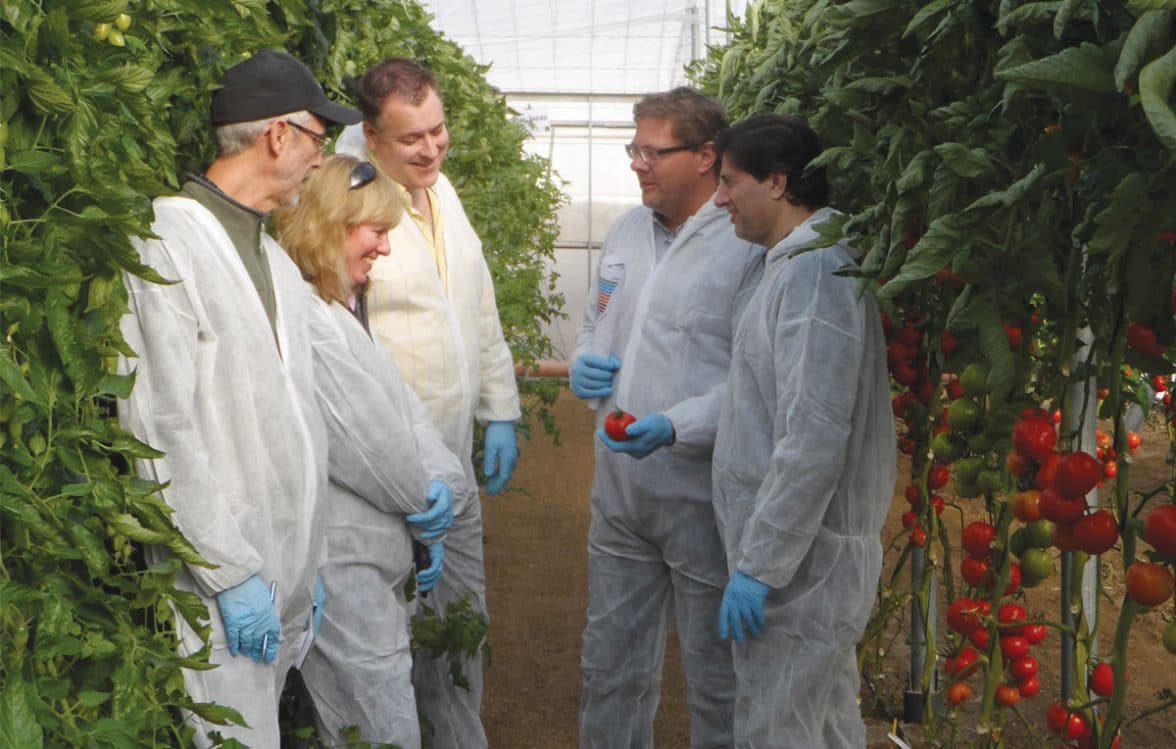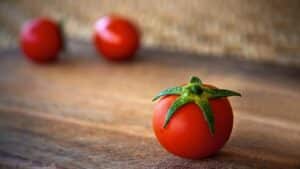A closer look at tomato breeding and its challenges.
I n each issue, European Seed takes a closer look at one of the many crops that our European plant breeders are working on. In this issue, we’re putting the tomato in the spotlight and talking with several vegetable breeding companies to learn what their breeding challenges are and what kind of innovations they are working on. We asked five industry experts for their opinions — Semillas Fitó tomato product manager Salvador Peramo; Rijk Zwaan tomato breeding manager Martijn Eggink; Vilmorin SA research manager Jean-Paul Guinebretiere; Enza Zaden crop research director Kees Könst; and Semillas Fitó tomato breeding head German Anastasio.
European Seed: What are the main challenges that companies are facing in tomato breeding?
Salvador Peramo: Maintaining the yield increases while clearly improving the fruit quality, particularly the internal quality such as taste, are among their most important challenges.
Martijn Eggink: Improving yield, taste and shelf life, increasing diversity and developing new disease resistances would constitute the main challenges of the global tomato program.
Jean-Paul Guinebretiere: The tomato is a global crop. At Vilmorin we are not breeding for all slots or markets like the upper 48 (Dutch GH) or processing markets or cherry types. Nevertheless, we have the ambition to become a worldwide player. So the main challenges we are facing are, on the one side, how to organise a global breeding team, which is managed by one senior breeder, without or with only limited barriers between the local teams working for local markets. On the other side, new technologies such as biotechnology, bioinformatics and biostatistics and techniques such as high-throughput phenotyping are boosting the traditional ways of breeding. The challenge lies in the integration of these techniques and in the management of all data. In addition, intellectual property issues are also a big concern, trying to find a good balance between a “defensive” and an “offensive” strategy. Another challenge is how to facilitate and cultivate innovations in such a big market. And last but not least, to deal with new regulations in seed exchanges which complicate the breeding processes.
Kees Könst: Consumers are becoming more critical and demand tasty food of high quality. They also look for more variation/diversification. Our challenge is to provide them with a wide range of high-quality, good-tasting tomatoes. High-quality means also being free of pesticide residues, so we need to bring varieties on the market with good resistance packages.
ES: As in practically every breeding program of any crop, breeding for disease resistance is one of the most important, if not the most important breeding goal. Which diseases are most troublesome and are there any new diseases that we should be aware of?
JPG: Of course, disease resistance is one of the most important things facing the crop. We are also seeing new problems from viruses, nematodes, fungi and bacteria. Bacteria may be a big issue in the near future because there are only a few strategies and genetic resources [available to us at the moment].
ME: Classifying which diseases are most troublesome is related to the production region and cultivation method. In high-tech tomato cultivation in the Netherlands, we are working to improve resistance against powdery mildew (Oidium lycopersici). If we look at organic cultivation, on the other hand, we see that leaf mould caused by Cladosporium fulvum (synonym, Fulvia fulva) is an important problem. Several resistance genes have been breached by a new strain. We developed varieties with resistance against this new strain. In production areas where growers use less heating (gas), and in areas with a big difference between day and night-time temperatures, humidity inside the greenhouse can become too high. In these areas, we see that late blight (Phythophthora infestans) becomes a bigger problem. That is why we work on breeding resistant varieties. Disease resistance is vital to secure yields and can contribute to decreasing the use of chemical crop protection in tomato cultivation.
KK: I agree that in different geographic areas and crop systems (protected, hydroponics, soil, open field, etc.) there are different pests causing problems. A good resistance package reduces pesticide use and gives security to a grower. The diseases that are most troublesome are the ones that are difficult to control and cause really big losses, often obliging the grower to use large amounts of pesticides. The main ones are the begomoviruses (transmitted by whiteflies), late blight, bacterial wilt and bacterial spot. Bacterial wilt and spot are affecting the open field tomato crops in the sub-tropical areas.
Besides these diseases, there are also some insects doing a lot of damage to the shelf life and marketability of tomato fruits. Over the last couple of years, the moth Tuta absoluta has spread from South America to other parts in the world, doing harm to tomato crops. Also, other new diseases or resistance breaking strains of known diseases are keeping our breeders busy. There are new races of the mildew Fulvia fulva and Oidium neolycopersici, another mildew, becoming more widespread. With respect to root diseases, we see fusarium crown root rot becoming a serious problem in field crops in Eastern Europe/central Asia and the Middle East — varieties with resistance and adapted to these areas are needed. Another root disease is the “crazy root” growth caused by Agrobacterium rhizogenes in hydroponic crops. Also new resistance-breaking nematode strains damage tomato crops in certain areas.
With regards to viruses, besides the already-mentioned begomoviruses, there are a lot of other viruses and some viroids causing problems in tomato. It is clear that having the right resistance in a variety and good reliable production is important. As tomatoes are grown all over the world under different conditions, breeders work hard to make varieties adapted to a wide range of conditions and cultivation types. Important work is being done to make varieties better adapted to extreme temperatures (high and low), salinity, drought and high humidity.
German Anastasio: The climatic change we are witnessing is having an impact on the diseases that affect the tomato crop. We are seeing that some foliar diseases such as Oidium, Stemphylium and Fulvia are becoming more prevalent. However, viruses are still the main limiting factor — geminivirus with its frequent recombination and highly effective transmission by whiteflies is always a threat that can overcome the resistance genes we are dealing with currently. At the same time, there is the risk of an outbreak of a new unknown disease, which is always the worst scenario.
ES: Besides resistance, there are of course numerous other breeding targets. What are you working on?
ME: We are continuously improving the yield of our varieties. Increasing crop yields is a prerequisite for feeding the world population and a crucial factor to safeguard tomato growers’ competitiveness. We do not introduce varieties that don’t meet our quality standards. In every segment, our challenge is to combine a good yield with good quality and taste. To secure a year-round supply, tomatoes sometimes have to be transported over long distances. For example, from the south of Europe to northwest Europe and from Turkey to Russia. In these cases, a good shelf life (minimum three weeks) is essential, again with the challenge to combine this with a good taste.
JPG: We can’t forget yield, earliness, and fruit quality, but consumers are also requesting tomatoes that are healthier, taste better and are innovative products which are not so new for us, but quite difficult to tackle at a breeding level.
ES: What are the innovations that your tomato breeders are bringing to the market?
ME: We are continuously working on a broad assortment, and keep on developing [new products like] new snack tomatoes with new shapes and colours. We have recently introduced two innovative tomato concepts, the Silky Pink and Internal Red tomato varieties.
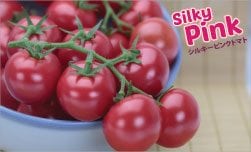
Pink tomatoes are well known in Asian countries, but quite new in the rest of the world. Therefore, Rijk Zwaan introduced the label Silky Pink. The distinctive colour and juicy flesh of these sweet ‘fruit tomatoes’ — as they are called in Japan — offer growers and retailers interesting opportunities to enter new markets.
Internal Red tomatoes have a dark red color and a deep red core, what gives them a tasty and healthy appearance. This trait was picked up by Rijk Zwaan breeders and is currently available in our tomato assortment. The distinctive look can give a positive impression to the image of the tomato.
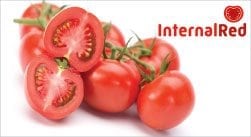
GA: I believe that the future of the industry is to satisfy the market chain. Up to now, much of the emphasis in plant breeding was focused on maximising yield that satisfies the growers. Later on, postharvest storability was accomplished and distributers benefited. Now it’s the consumers’ turn [to benefit], by keeping the former accomplishments fine-tuned with new traits. Specifically, this is our target and our varieties are tailored with these principles. When asked, consumers always choose our green harvest beef tomato Egara as the favourite to buy again. Another example would be the cluster tomato Ateneo, which provides a better taste and is meeting [production demands]. As you can see, we are bringing the flavour beyond the cherry types.
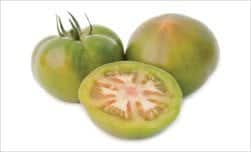
JPG: Without any hesitation, the elongated tomatoes for the fresh markets have been a major innovation brought by the company.
ES: How are your tomato breeders helping to meet the demands of growers and consumers?
GA: Since its inception, Semillas Fitó has invested heavily in research, development and innovation to enhance its catalogue of seed varieties. But what really sets the company apart from other companies in the industry is how they have focused R&D efforts from day one on local needs in each field. Thus, R&D investments at Semillas Fitó aim to benefit producers by improving production, plant resistance and fruit quality, distributors by extending product life without losing quality, and consumers by enhancing all aspects related to the product’s look, taste and texture.
Proximity to the market is important to our company. We keep in frequent contact with our customers including growers, packers and distribution chain. They provide the raw information that is used to define the breeding goals for our breeders. We also favour the direct exposure of our breeders to [market forces].
KK: At Enza Zaden we believe that our breeders have to be present in the market, to understand all the demands and trends, so we can work together with our clients to create new and innovative products. With this pro-active approach we would like to add extra value to the whole chain from grower to consumer. For example, three years ago the Spanish breeding team found the first red cocktail variety delivering excellent taste (throughout the Spanish growing seasons, hot or cold), uniform fruit set and beautiful product presentation. Together with a selected group of clients Enza Zaden launched the brand TomAzur for these varieties, today available in many leading European supermarkets.
In 2013 Enza Zaden launched a yellow cocktail tomato in the U.S., which has a taste equal to the leading red cocktail tomatoes. At the end of 2013 we found out that our variety Avalantino was exceeding the market standard in all its aspects. Today we have a select group of clients introducing Avalantino in the large-vine segment— and with success. Retail clients are embracing the concept.
JPG: Through our marketing department we focus on market analysis and following consumer trends, but sometimes breeders are also invited to propose fancy products, which can create new markets.
ME: Developing new varieties that fit local circumstances contributes to an increased availability throughout the year (with a stable quality and taste). New tomato types — snack sizes, better taste, more shapes and colours — can inspire chefs, retailers and consumers and contribute to higher vegetable consumption and healthier lifestyles. We aim to connect to these groups of vegetable users by means of direct and indirect communication and thus learn about their habits and preferences. An example is our online social platform LoveMySalad.com. The content of this informative site is written by and for salad lovers from all over the world and linked to a Facebook page with more than 170 000 followers.
Origins and Market Share
The species Solanum lycopersicum, member of the nightshade family, originated in the South American Andes, and spread throughout the world following the Spanish colonisation of the Americas, and its many thousands of varieties are now widely grown. Its arrival in Europe is disputed. Some state that Spanish conquistador Hernán Cortés may have been the first to transfer small yellow tomatoes to Europe in 1521. Some believe Christopher Columbus may have taken them back as early as 1493. The earliest discussion of the tomato in European literature appeared in a herbal written in 1544 by Pietro Andrea Mattioli, an Italian physician and botanist, who suggested that a new type of eggplant had been brought to Italy that was blood red or golden colour. However, it was not until 10 years later that tomatoes were named in print by Mattioli as pomi d’oro, or “golden apple”.
In 2012, tomato production was valued at $58 billion and tomatoes were the eighth most valuable agricultural product worldwide. According to FAOSTAT, the Top 5 producers of tomatoes were China, India, the U.S., Spain and Egypt.


